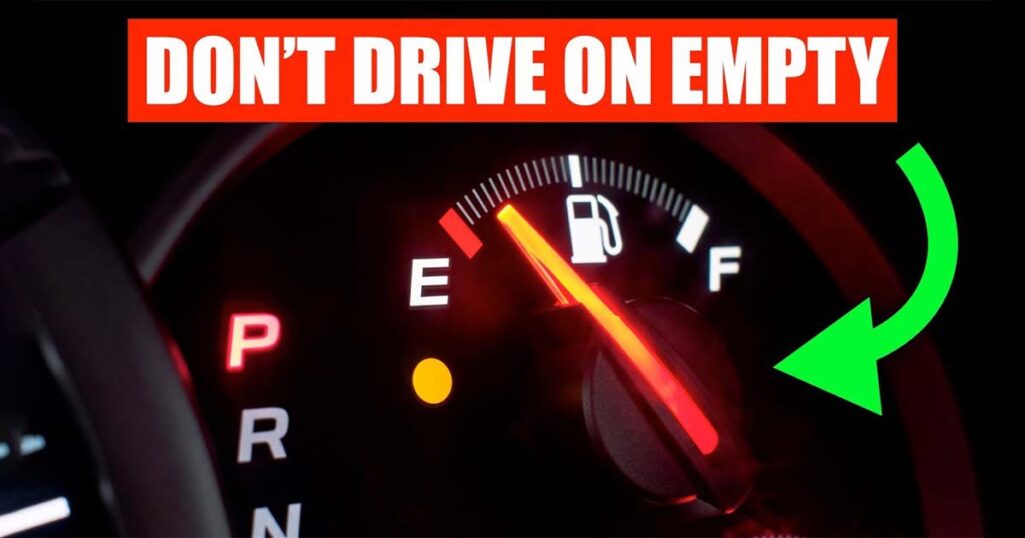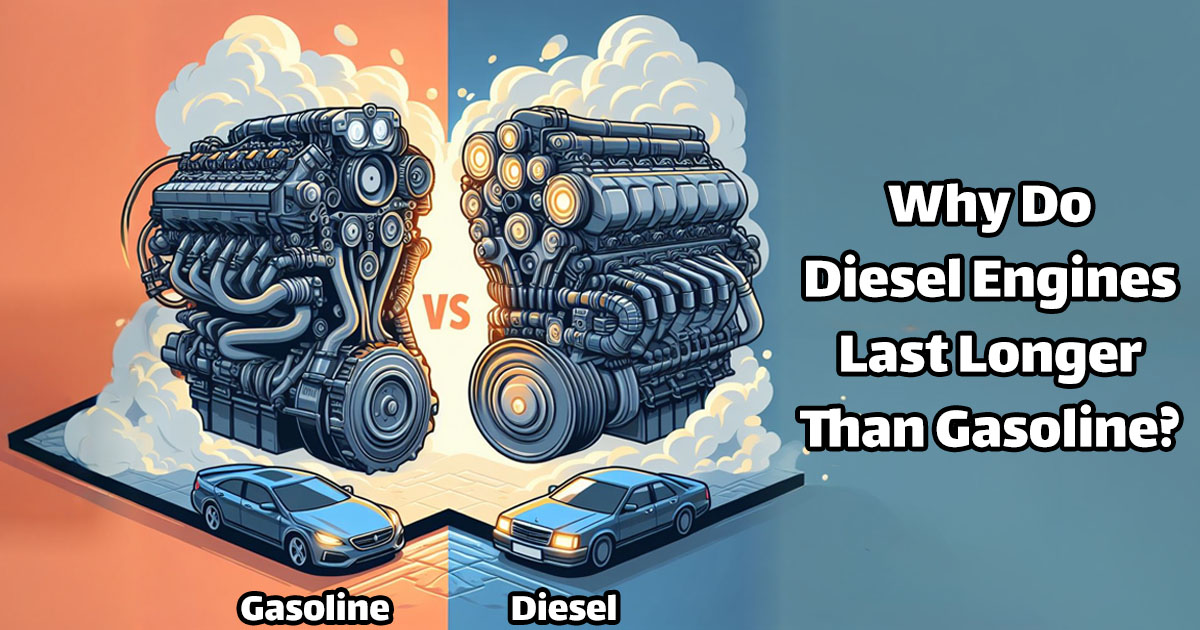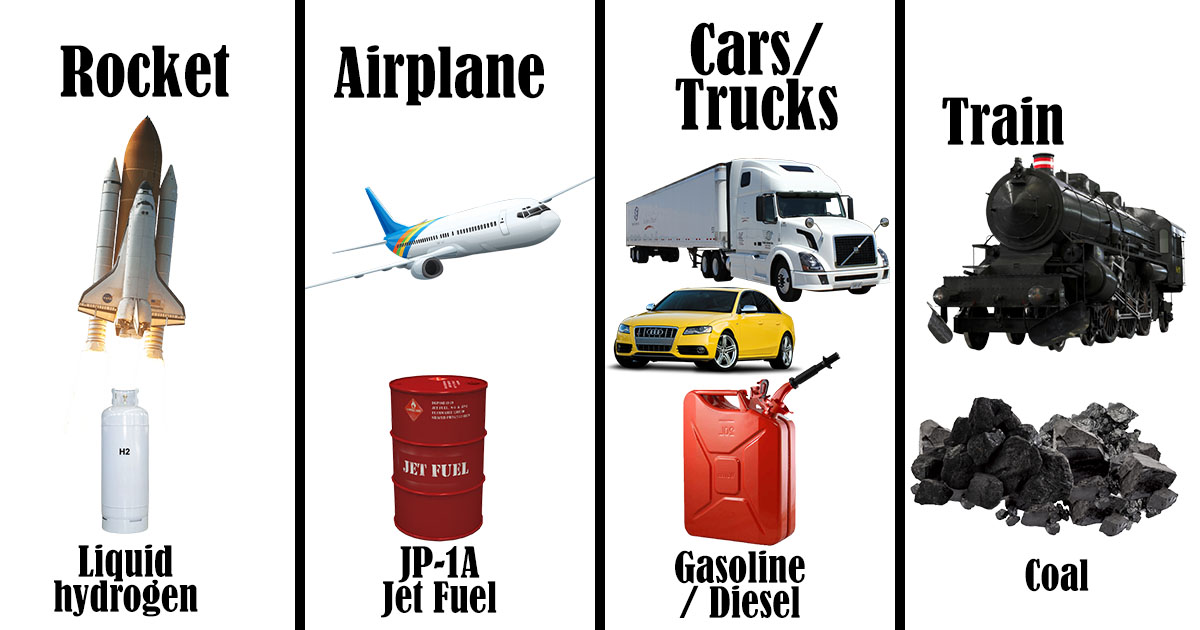
Fuel is the main power source of almost all vehicles in the world. Engines that drive these vehicles depend on petroleum-based, and non-petroleum fuel to propel the vehicle and provide it with the needed power. However, not all fuel is the same, and not every vehicle uses the same fuel!
Every type of vehicle uses a different kind of fuel. From passenger airplanes to fighter jets, small cars and big trucks, all have different types of fuel, and this is for a reason.
Why does every type of vehicle have its own fuel type? And why don’t they all use the same kind of fuel? In this post, we will answer these questions for the below types of vehicles:
- Rockets
- Airplanes
- Cars/Trucks
- Locomotives or Trains
Rockets
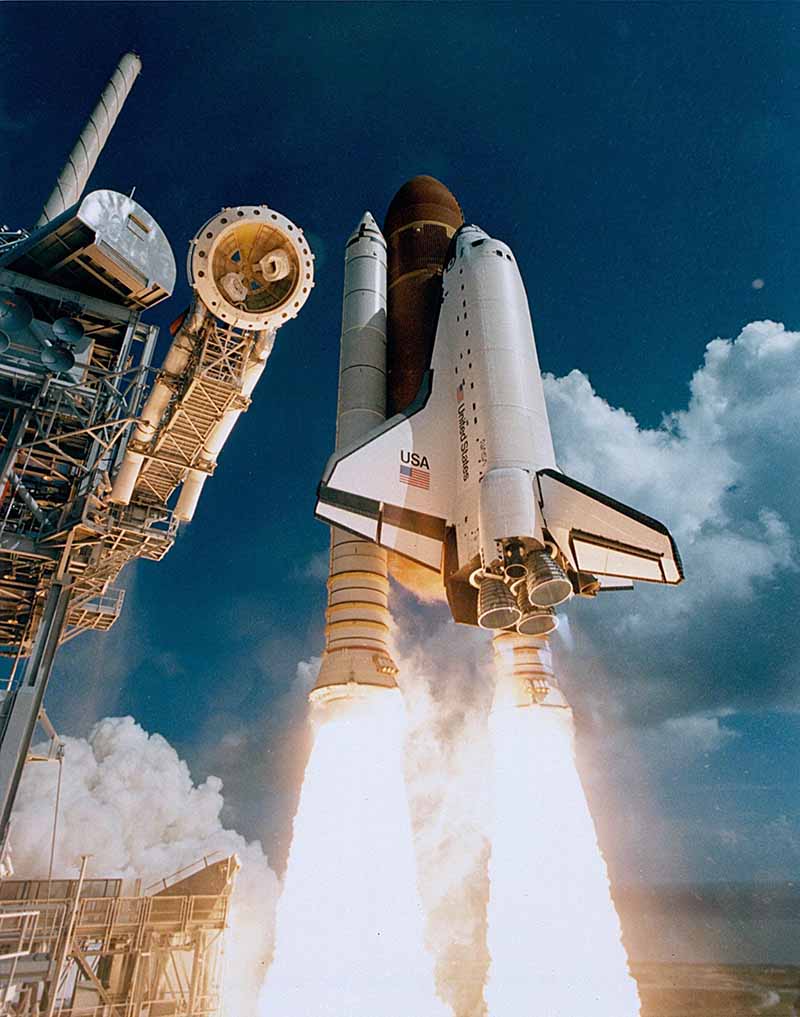
During the history of rockets development, many fuel types were tested and used, including solid type fuel, liquid type fuel, and gas type fuel.
Rockets require higher density fuels, which makes them powerful and more compact to store, and solid fuels provide this. On the other hand, rockets also require a higher specific impulse which is the measure of the propellant efficiency, and liquid fuels provide this.
We will focus on the most used liquid-propellants/fuels for rockets (as of 2018):
- Kerosene (RP-1) + liquid oxygen (LOX): Large space launches started using it as the cheapest and safest fuel. Its fundamental flaw is that it is mildly cryogenic, making it unsuitable for military applications requiring the storage of a fueled missile and fast launch.
- Liquid hydrogen (LH) + liquid oxygen (LOX): NASA and the US Air Force frequently employ liquid hydrogen as rocket fuel. The nozzle and other pieces are cooled with liquid hydrogen before it is combined with LOX and burnt to generate water with ozone and hydrogen peroxide traces.
- Hydrazine: Hydrazine is a colorless, flammable liquid with an ammonia-like odor that is an inorganic chemical. During World War II, hydrazine was utilized as a component in rocket fuels.
Airplanes

Aviation turbine fuel, or jet fuel, is a kind of aviation fuel developed for use in aircraft powered by turbine engines. This type of fuel needs to have a low freezing point to avoid fuel freeze at high-altitude flights. It also requires a high flash point temperature, which is the temperature at which the fuel vapor ignites at. Having a higher flash point temperature is safer for the planes.
Most common jet-fuel types:
- Jet A/A-1: When it comes to fuel specifications, Jet A-1 is the norm throughout the globe, whereas Jet-A specification fuel has been utilized in the US since the early 1950s.
- Jet B: The greater cold-weather performance of Jet B makes it a popular choice for aircraft. Jet B, on the other hand, is riskier to handle because of its lighter composition. As a result, it is rarely utilized outside of extremely cold regions.
- TS-1: It is a Russian-made jet fuel that is designed to operate better in cold conditions. Compared to Jet A-1, it has a lower freezing point (below -50°C) and more volatile behavior.
Cars / Trucks

Cars and trucks use either diesel or gasoline, which both of them are petroleum derivatives. Trucks usually use diesel fuel since this type of engine provides higher torque for the vehicle, which is the most important performance number for high duty trucks that need to carry high weights and travel long distances.
On the other hand, cars usually tend to be gasoline-powered, and this is due to the high speeds it provides to the vehicle.
To know more about diesel and gasoline engines, read this post.
Locomotives or Trains
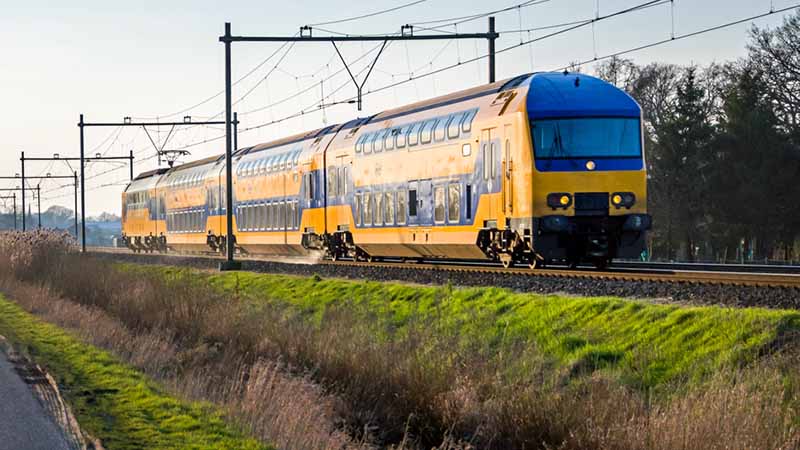
Trains have changed greatly over the years, and the fuel type used to drive them has also changed. Nowadays, most of the trains are powered either by diesel fuel which provides high torque or by electric power.
But previously, trains were powered by steam power, which is a combination of water to be heated to produce steam, and fuel to be burned to heat up the water.
The fuel utilized by the train was determined by what was economically sustainable. Coal was readily available in the United Kingdom and elsewhere in Europe. Thus this was the natural choice for steam engines from the beginning. Before 1870, most steam locomotives in the United States were powered by wood, but as the Eastern woods were removed, coal steadily replaced it until it became the primary fuel for steam locomotives worldwide.
This method is not used anymore because it is not as efficient as diesel or electric.
Conclusion
These are some examples of the fuel used by different vehicles, but if we would go deeper, the list will be never-ending.
Fuel type is a very important aspect when designing a vehicle for a certain purpose. Surrounding temperature, fuel volatility, fuel freezing point, and many other aspects are considered while choosing the fuel type.
Electric vehicles are now becoming more and more dominant, but they still can’t replace combustion engines. We have talked about this topic in a post called: This is Why Electric Cars will NOT be the Future!

